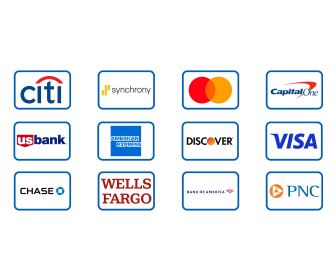Best Cards for Bad Credit: Can You Still Get Approved?
Having bad credit can feel like a locked door — but it doesn’t mean you’re shut out of the credit world. In fact, several banks specialize in cards designed specifically to help you rebuild. Whether your score took a hit due to missed payments or limited history, there are still responsible, affordable ways to get approved and start repairing your credit in 2025.
Understanding “Bad Credit” in Lender Terms
In the U.S., a FICO® Score below 580 is generally considered “bad.” Between 580–669 is “fair.” Issuers look not just at the number, but at patterns — recent late payments, high balances, or collections. Even with a low score, responsible use of a secured or subprime card can begin reversing the trend within six months.
Top Credit Cards for Bad Credit in 2025
These cards have forgiving approval requirements and focus on rebuilding, not rewards:
- Capital One Platinum Secured Credit Card — Designed for beginners and rebuilders. You can qualify with a refundable deposit as low as $49 to access a $200 limit. No annual fee and automatic credit line review after 6 months.
- Discover it® Secured Credit Card — Earns 2% cash-back at gas stations and restaurants (up to $1,000 per quarter) and 1% on everything else. No annual fee, plus free FICO® Score tracking each month.
- OpenSky® Secured Visa® Credit Card — No credit check required. Approval depends on income and deposit. Reports monthly to all three credit bureaus (Experian, Equifax, TransUnion).
- Mission Lane Visa® Credit Card — Unsecured card for lower credit scores. Modest annual fee but no deposit required, making it ideal for users rebuilding after bankruptcy.
- Petal® 1 “Rise” Visa® — Uses alternative data (like bank history) instead of credit scores for approval. No annual fee, up to 10% cash-back at select merchants.
How to Improve Approval Odds
- Apply strategically: Submit one application at a time to avoid multiple hard inquiries.
- Have income ready: Issuers verify you can afford minimum payments — consistent income matters more than high salary.
- Start secured if needed: A refundable deposit lowers lender risk and increases your chances of approval.
- Keep utilization low: Use less than 30% of your limit each month to show control.
- Pay on time — every time: A single late payment can undo months of progress.
Banker’s tip: Your credit score can improve within months of responsible use. Keep the account open long-term; “age of credit history” adds major points over time.
Secured vs. Unsecured: Which Is Better for Bad Credit?
A secured card requires a refundable cash deposit and is the safest bet for approval. Your deposit becomes your credit line — typically between $200 and $2,000. An unsecured card doesn’t need a deposit, but may have a higher APR or annual fee. Either option helps rebuild credit when used wisely, as both report to the major credit bureaus.
Final Thoughts
Even with bad credit, you still have options — and a chance to start fresh. Focus on cards that report monthly, keep fees minimal, and give you space to grow. Pay on time, keep balances low, and within a year, you can move from “bad” to “good” territory. The key isn’t perfection — it’s consistency.
Not financial advice. Credit terms and approval criteria vary by issuer. Always check the latest details directly from the bank before applying for any card.
Continue reading: How Carrying One Credit Card Can Improve Your Score · Balance Transfers 101: Move Debt to Pay Less Interest



